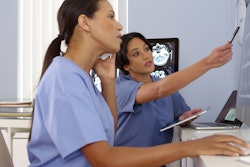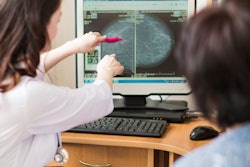A radiology department-sponsored breast pump initiative may help ease the transition of female radiologists returning to work from family medical leave, a study published July 23 in Clinical Imaging found.
Researchers led by Juliana Atallah, MD, from New York Presbyterian - Weill Cornell Medical Center found that providing a free portable breast pump pilot in their radiology department had a positive impact on productivity during the workday and achieving breastfeeding goals.
“Creating initiatives like this helps support female radiologists and gender diversity in the field,” Atallah told AuntMinnie.com. “Ultimately, it’s imperative to support female radiologists and trainees during this time to promote a more equitable work culture.”
While some radiologists may feel excited to return to work following family medical leave, barriers exist when it comes to female radiologists who breastfeed. These include lack of sufficient time, unsupportive work environment, and inadequate resources for milk expression. The researchers noted that this may have implications for maternal and infant health, as well as physician burnout.
Atallah and colleagues explored how a free breast pump initiative within their radiology department helped overcome these barriers. They issued a survey to all female radiologists and radiologists-in-training, assessing the impact of the portable pump on postpartum work-life integration.
Final analysis included 59 surveys. The researchers used a five-point Likert scale to gauge responses from the survey respondents. They found that respondents reported a positive or very positive impact of the pump.
| Survey response scores from free breast pump pilot | |
|---|---|
| Indication | Median Likert score |
| Transitioning back to work | 4.5 |
| Decision to continue breastfeeding when returning to work | 4 |
| Duration of breastfeeding | 4 |
| Use of pump while engaging in clinical work | 4.5 |
| Daily productivity | 4 |
Additionally, 94% of portable pump users (16/17) reported having their lactational needs addressed while returning to work, compared with 54 % (6/13) of those returning from leave prior to the pump initiative (p = 0.003).
Finally, the research team compared responses from radiologists who used the portable pump to those used traditional lactational resources. It found that those who used the pump were significantly less likely to miss educational opportunities (0% vs. 44 %, p = 0.03) or academic engagements due to lactational practices at work (0% vs. 44 %, p = 0.01).
Atallah said that initiatives such as this can help improve job satisfaction among female radiologists, mitigating the negative effects of burnout and making the field more attractive for medical students.
“Although it’s a small sample size, we just want to highlight the challenges that female radiologists and trainees experience during this tough transition back from parental leave … and hopefully provide a valuable tool that can alleviate the stress and inform other departments and institutions on a possible resource to support lactating physicians,” she told AuntMinnie.com.
The full study can be found here.



















